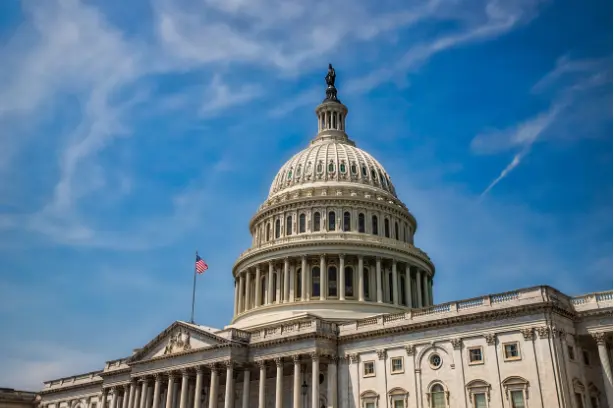By Preserve Gold Research
Bankruptcies are surging across the nation, heralding a new wave of hardship for many American businesses. This year alone, 346 companies have filed for bankruptcy, with June marking a staggering 75 filings — the highest monthly count since the pandemic’s peak. Amid the faltering economy, businesses of all sizes are struggling to stay afloat. From iconic retail giants to beloved local restaurants, few industries have been spared from the rising tide of bankruptcies.
In June, familiar names like Redbox and its parent company, Chicken Soup for the Soul Entertainment, joined a growing list of businesses that have succumbed to the economic pressures that pervade the current climate. Other high-profile companies that have recently filed for bankruptcy include the largest seafood restaurant chain in the world, Red Lobster, and electric vehicle maker, Fisker.
“The economy has weathered the Fed’s higher-for-longer strategy admirably well, but there is a mounting threat that the ongoing pressure will expose fault lines in the financial system,” wrote Moody’s chief economist Mark Zandi. His warning comes at a time when the consumer discretionary sector leads the bankruptcy wave, with 55 filings this year alone, followed closely by healthcare and industrials.
Experts say high interest rates, persistent supply chain issues, and deteriorating consumer spending are the main culprits behind this flurry of bankruptcies. And as businesses struggle to stay afloat, it’s the employees and customers who ultimately suffer the most. With unemployment numbers ticking up and consumer confidence waning, the ripple effects of these bankruptcies are felt across the nation.
The current wave of bankruptcies is yet another reminder of the fragility of our economic system and how quickly things can unravel. As we witness this historic surge in corporate bankruptcies, one has to wonder if we’re merely at the beginning of an even larger financial crisis. The road ahead appears fraught with challenges, and the ability of companies to adapt and survive in this ever-changing landscape will be tested like never before.
The Fed, Rising Costs, and Supply Chain Woes
A toxic brew of high interest rates, skyrocketing inflation, and persistent supply chain setbacks has set the stage for this year’s rash of bankruptcies. Businesses with heavy debt loads have been hit particularly hard, as 22-year high borrowing costs have made it nearly impossible to service their loans. Critics argue that the Fed’s decision to maintain interest rates at the current 5.25%-5.50% level for nearly a year risks causing more harm than good. “If I were on the Fed, I would have argued for rate cuts at the end of last year,” said Mark Zandi, chief economist at Moody’s Analytics. “I think they’re taking an increasing risk of putting too much pressure on the economy, financial system and ultimately, potentially breaking something.”
A growing number of companies are finding it nearly impossible to refinance their debts or stretch their finances further. Tighter lending standards and higher borrowing costs are squeezing already struggling businesses, and the burden of interest payments is becoming too much to bear for many. As Jay Westbrook, a bankruptcy expert from the University of Texas School of Law, aptly put it, “If the rates don’t come down pretty soon, I think we’re going to see many more bankruptcies.” While some companies have managed to stave off closure through creative financial maneuvers, the margin for error is shrinking.
Inflation adds another layer of complexity. Prices for essential goods and services continue to rise, putting more pressure on businesses already struggling to stay afloat. Those who pass on the cost to consumers risk losing customers, while those who absorb the costs risk further financial strain. This Catch-22 situation has forced many companies into a difficult balancing act, constantly reevaluating prices and expenses to find the right balance that keeps them in business. At an individual level, less purchasing power means less discretionary spending – a trend evident in the latest Fitch Ratings report. According to Fitch, consumer spending growth will slow to 1.9% in 2024, compared to 2.2% in 2023. With disposable income growth decelerating, businesses face the dual challenge of higher operating costs and dwindling revenue streams.
Consumer sentiment has also taken a hit. The latest McKinsey report shows a dip in US consumer confidence, fueled by inflationary concerns and a weakening labor market. This pessimism has already begun to affect spending patterns, with many consumers opting to save rather than splurge. In the three months through June, year-to-year sales volumes dropped by 1.3%, impacting quarterly earnings and pushing some retailers to the brink of bankruptcy.
Then there’s the issue of supply chains. Once thought to be a relic of the early pandemic, supply chain disruptions continue to plague businesses worldwide. Though ports are less clogged and raw materials more available, the ripple effects linger. From higher shipping costs to transportation delays due to ongoing attacks in the Red Sea, companies are finding it difficult to keep up with demand and deliver products on time. The result? Unsatisfied customers lost sales, and a further strain on already struggling businesses.
The Road Ahead: How Surging Bankruptcies Could Shape the Future
The surge in company bankruptcies signals a troubling road ahead for the U.S. economy if left unchecked. Picture this scenario—corporations, large and small, grappling with insurmountable debt, unable to find a way out. What would happen to the jobs they once created, the products and services they offered, and the overall health of the economy? When one company falters, it often drags vulnerable suppliers, contractors, and even customers down with it.
Take the case of J.C. Penney, the iconic American department store chain. In May 2020, the company filed for Chapter 11 bankruptcy, citing the pandemic’s impact on sales and the crippling effect of long-term debt. As a result, JCPenney closed over 200 stores, laid off thousands of employees, and restructured its operations in the hopes of emerging from bankruptcy stronger.
But for every JCPenney, there are dozens of smaller businesses that do not have the resources or brand recognition to survive a bankruptcy filing. With less favorable financing options, many of these businesses have to shut down for good, leading to a domino effect on the surrounding economy. And with the maturity of leveraged loans coming due, some analysts expect the number of bankruptcies to continue climbing in the coming years.
“You have major maturity walls coming up in 2024, ’25 and ’26,” Moelis & Co. co-founder Navid Mahmoodzadegan said in an interview with Bloomberg. “A lot of those companies, unfortunately, aren’t going to be able to refinance through those maturities. And so, I think there’s going to be a lot of not just bankruptcies, but a lot of balance sheet restructuring, recapitalization activity around many different names.” In short, the bankruptcy wave is far from over.
The impact of increased bankruptcies goes beyond just job losses and store closures. With fewer competitors, surviving companies have more power to dictate prices, often leading to higher costs for consumers. Already struggling with withering purchasing power, consumers may feel the squeeze even more as businesses take advantage of a less competitive market. Meanwhile, suppliers and vendors who rely on these bankrupt businesses for their own operations also suffer, creating a ripple effect throughout the supply chain. A vicious cycle that can have far-reaching consequences on the economy as a whole.
But the financial strain extends far beyond the corporate world. Burdened with a growing number of property vacancies as businesses shut down or downsized, the already teetering commercial real estate market could be hit hard by a wave of bankruptcies. This could further depress property values and create an oversupply of commercial real estate, affecting rental yields and property investments. With many businesses struggling to pay rent and landlords facing their own financial pressures, the potential for a collapse in the commercial real estate market looms large.
Bracing for Impact
Amid the prospect of a looming bankruptcy wave and the fallout it could bring, many Americans have turned to gold for peace of mind. With its intrinsic value unaffected by the failures of businesses, the yellow metal has seen a sharp surge in demand that has driven its price to record highs. Gold futures have risen by over 19% since the beginning of the year, outperforming not only other assets like bonds and cash but also the stock market. And while a business’s assets may lose value or become completely worthless in bankruptcy, gold’s historical stability and resilience may continue to shine bright in uncertain times.







